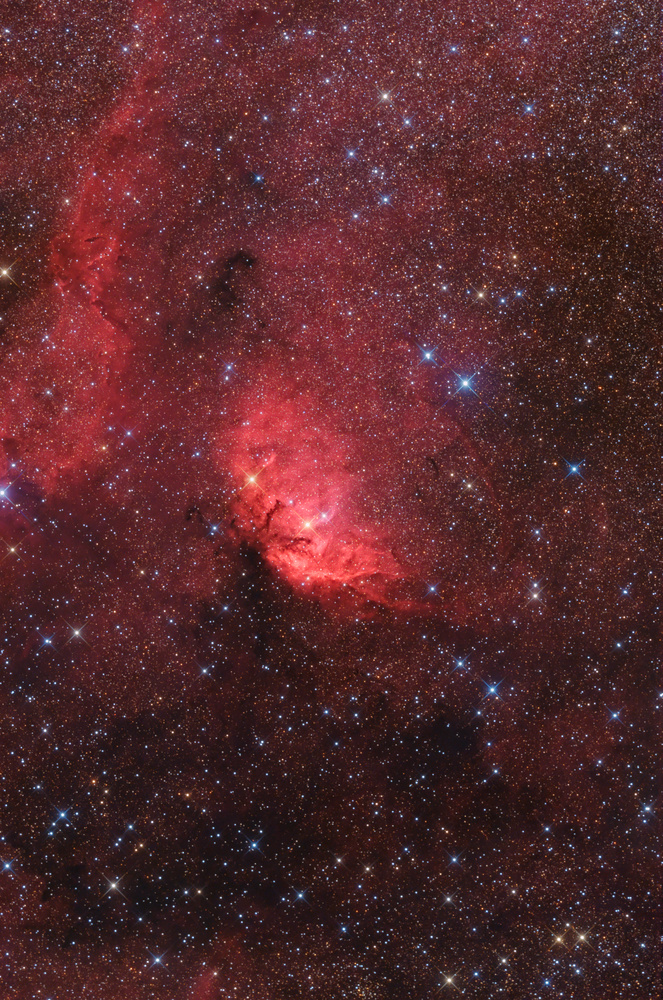|
Location / Date |
Zellerndorf, July 2014 |
|
Telescope / Mount / Guiding |
ASA 10" Astrograph, ASA 3" Wynne Corrector |
|
Camera / Exposure |
Michael Hirmer's self-modified peltier-cooled Canon EOS 500Da |
|
Processing |
Theli, Fitswork, PixInsight, Photoshop |
|
Notes |
The Tulip Nebula (Sh2-101) is a bright emission nebula located about 6,000 light-years away in the constellation Cygnus. The star that excites the Tulip Nebula area is HD 227018. It is so named because it appears to resemble the outline of a tulip when imaged photographically. It was catalogued by astronomer Stewart Sharpless in his 1959 catalog of nebulae.
The Tulip nebula, at least in the field seen from earth, is in close proximity to Cygnus X-1, a binary system and the brightest source of hard X-rays in our sky. It is site of one of the first suspected black holes. |
